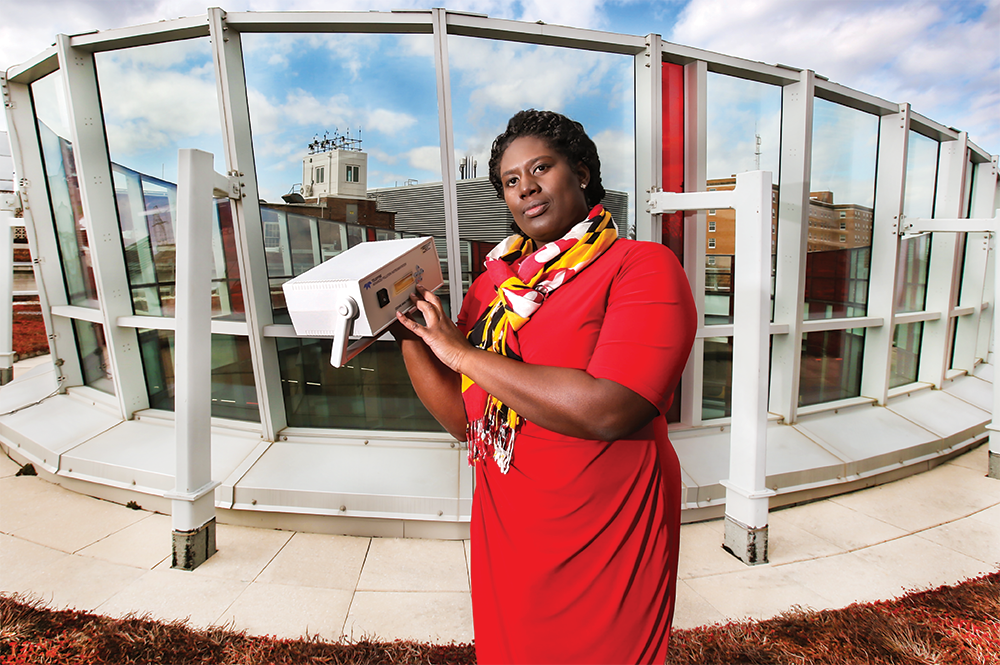Measuring Change in the Atmosphere
Look up at the sky. What do you see? Dynamic poems of color and shape attract the gaze of most. But Akua Asa-Awuku, associate professor of chemical and biomolecular engineering, sees beyond beauty. She’s interested in the sky she can’t see with just a tip of her head. Asa-Awuku strives to understand the molecular components of the atmosphere that exist at the ultrasmall nanoscale, where one nanometer is one-billionth of a meter. (For scale, a human hair is approximately 80,000–100,000 nanometers wide.) In nature, atmospheric nanoparticles have a range of effects, from interacting with cloud droplets to form or inhibit rain to modulating greenhouse gas behavior. In humans, they can be inhaled and impact the respiratory system or be used as biological or chemical threats in conflicts. “There are many exciting opportunities and important issues for society that rely on understanding the molecular composition of the atmosphere,” she explains. To do this, her work centers on identifying chemicals’ structural “fingerprints,” called spectra. Machine learning (ML) helps her go deeper. It expands the reach and utility of research by helping speed and improve the classification and categorization of air sample data. One collaborative ML-based project Asa-Awuku’s team is working on involves the U.S. Army Research Laboratory (ARL). The collaboration gives her and UMD students access to ARL’s sophisticated Raman spectroscopy technology to make highly detailed molecular identifications. It also eliminates tedium. “Studying spectra gets laborious. In order to do this, someone has to sit there and manually study it,” she says. Thousands of different molecular compositions exist in the air, and with this ML-informed technology, Asa-Awuku and her colleagues are able to make continuous, real-time measurements as opposed to static “snapshot” measurements showing only a moment in time. Having a fluid series of images helps scientists monitor change over time—and can be applied to defending national security through threat detection. “The Army Research Lab looks at threat detection, because we know that aerosols are constantly around us,” she says. While many of these aerosols are not dangerous at all, other harmful particles could be released in warfare—and Asa-Awuku’s collaboration with ARL could help innovate early threat detection and safe responses. “If you were able to have a real-time measurement and subsequent analysis of atmospheric composition, that would give you really interesting and useful data to help protect against threats,” Asa-Awuku says.
Related Articles: April 4, 2019 Prev Next |


